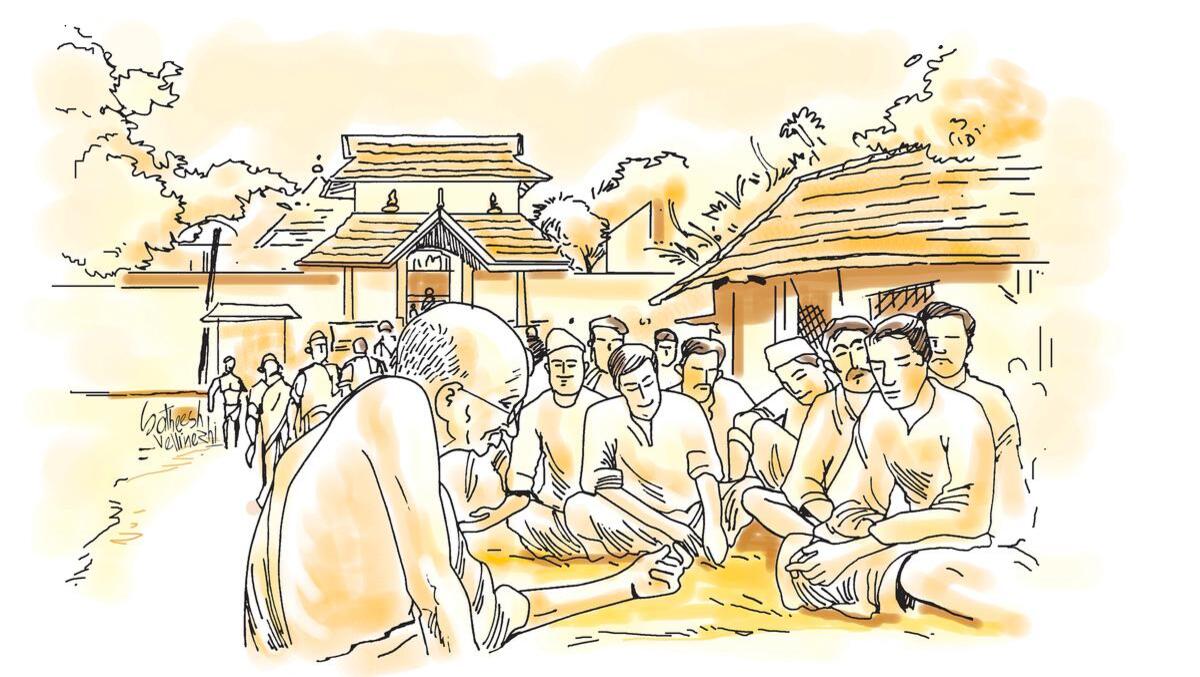Context:
Hundred years happened since the famous Vaikom Satyagraha-the first among temple entry movements.
Background:
Vaikom, a temple town in the princely state of Travancore, saw the start of a non-violent agitation on March 30, 1924 — the first among temple entry movements that would soon sweep across the country.
About Vaikom satyagraha
- The princely state of Travancore had a feudal, militaristic, and ruthless system of custom-ridden government.
- The idea of caste pollution worked not only on the basis of touch but also sight — lower castes were forbidden entry to any “pure” place, such as temples and the roads surrounding them.
- The second half of the 19th century, Travancore saw several social and political developments ushering in unprecedented social change.
- First, Christian missionaries converted large sections of lower castes seeking to escape the clutches of caste oppression. Second, the reign of Maharaja Ayilyam Thirunal Rama Varma (1860-80) saw many progressive reforms, such as universal free primary education — including for the lower castes.
- While religion and custom remained pervasive, the absolute material and intellectual deprivations of lower castes did not continue. The Ezhavas, in particular, emerged as the most educated and organised untouchable community in Travancore.
- While a small Ezhava elite had started to emerge, in many cases, the ritual discrimination, overrode material and educational progress.
- The issue of temple entry was first raised by Ezhava leader T K Madhavan in a 1917 editorial in his paper Deshabhimani.
- It was the entry of the Indian National Congress into the picture that changed the dynamics. Madhavan met Gandhi in 1921, and secured the Mahatma’s support for a mass agitation to enter temples.
- In the 1923 session of the INC in Kakinada, a resolution was passed by the Kerala Provincial Congress Committee to take up anti-untouchability as a key issue. This was followed by a massive public messaging campaign and a movement to open Hindu temples and all public roads to avarnas. Vaikom, with its revered Shiva temple, was chosen as the location for the very first satyagraha.
- Madhavan and other leaders took the strategic decision to initially focus on opening up the four roads around the temple — not the temple itself — to avarnas.They were promptly stopped and arrested. So, the next morning, another three men entered the forbidden roads and courted arrest. This went on every day — until the police stopped making arrests and barricaded the whole area instead.
- From then through September, protesters sat in front of the barricades, fasting and singing patriotic songs. Leaders such as Periyar and C Rajagopalachari came to Vaikom to offer support and lead the protesters. At the same time, counter-agitations raged on.
- In March 1925, Gandhi was finally able to iron out a compromise: three out of the four roads surrounding the temples were opened up for everyone, but the fourth (eastern) road was kept reserved for brahmins. This was finally implemented in November 1925, when the government completed diversionary roads that could be used by the low castes “without polluting the temple”. The last satyagrahi was recalled from Vaikom on November 23, 1925.
- The Vaikom satyagraha was a remarkable movement, which sustained itself for over 600 days, amidst hostile social forces, police crackdowns, and one of the worst floods in the town’s history in 1924.
- The final compromise disappointed many. Famously, Periyar, who had envisioned a far more spectacular outcome, fell out with Gandhi over the issue.
- In November 1936, the Maharaja of Travancore signed the historic Temple Entry Proclamation which removed the age-old ban on the entry of marginalised castes into the temples of the state.This, along with the demonstration of Gandhian methods of civil disobedience as effective tools of protest, was the great success of the Vaikom satyagraha.


.jpg)

Comments (0)